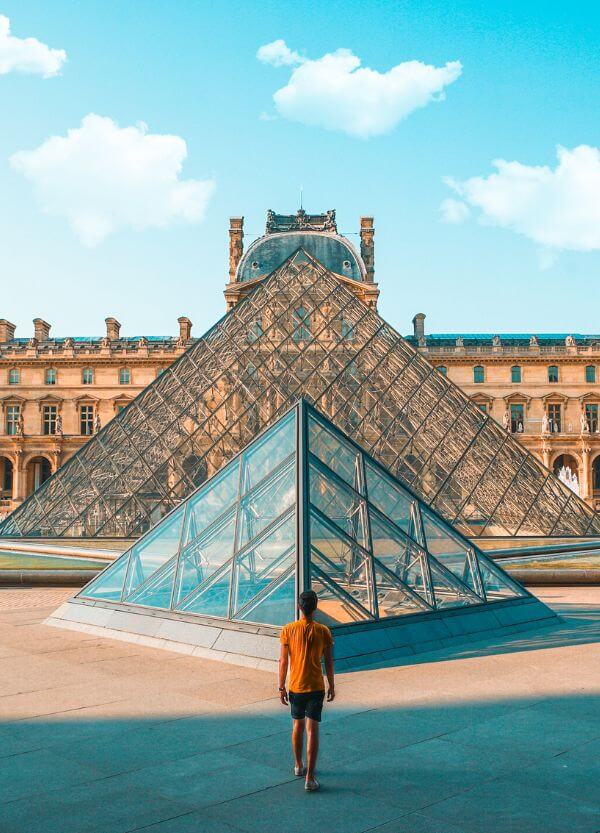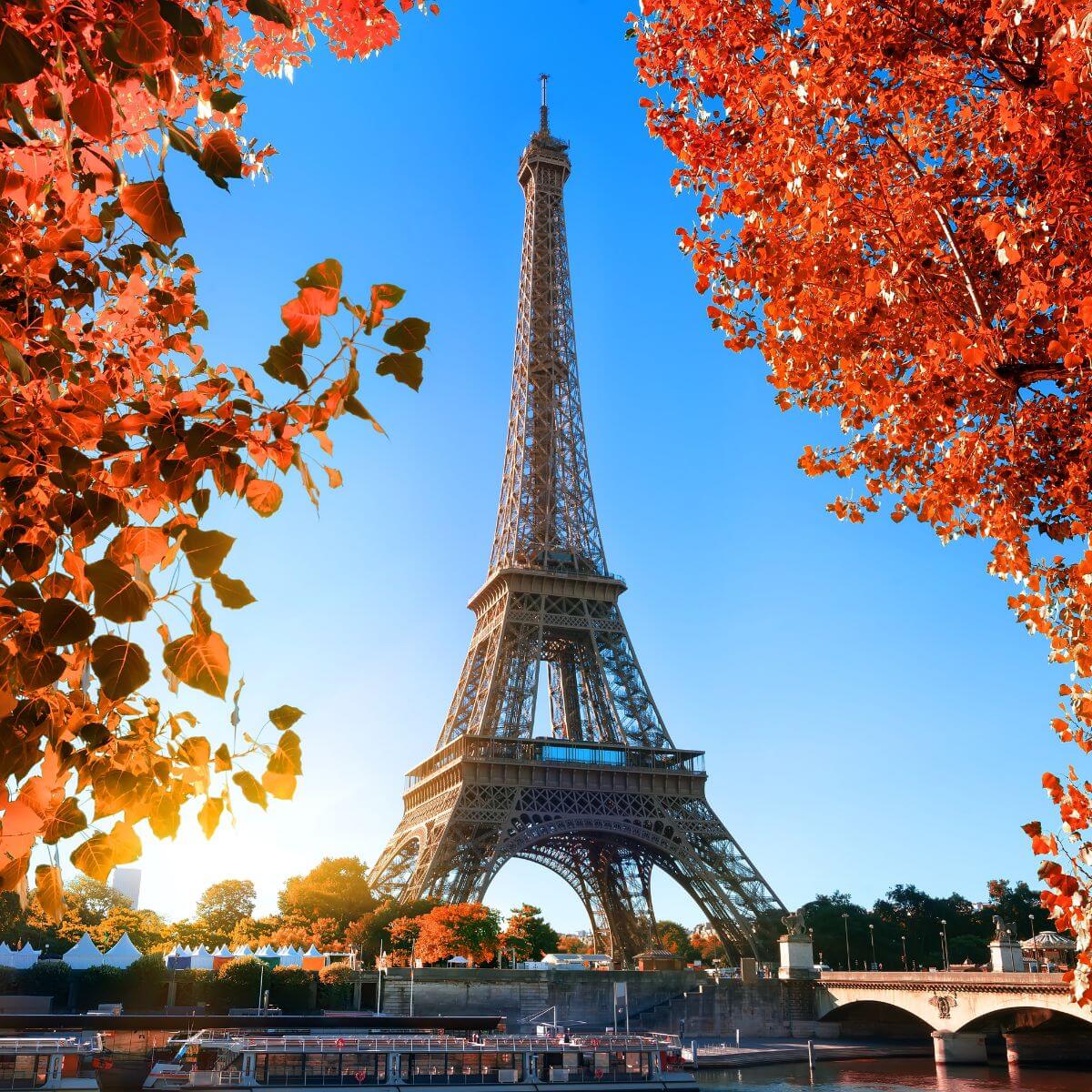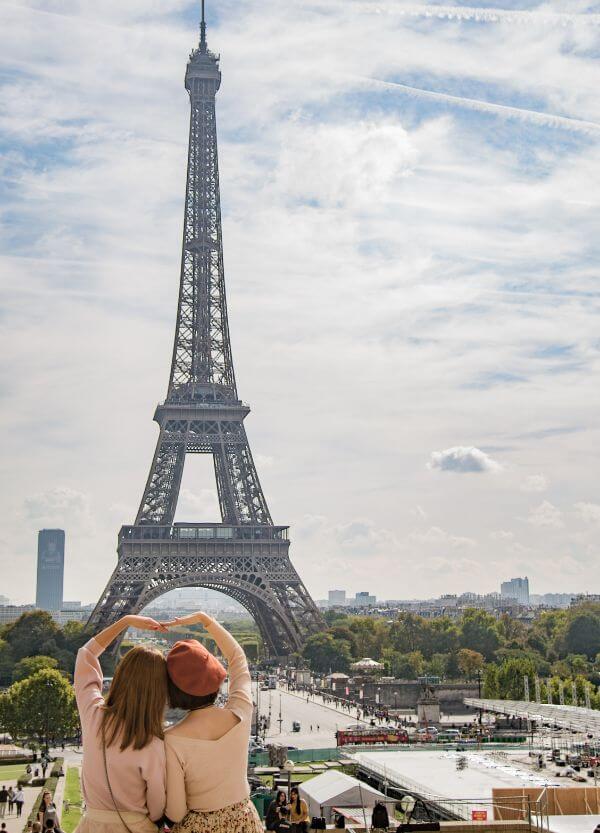How to Visit the Musée d’Orsay In Paris + Must-See Artworks
The Musée d’Orsay in Paris is one of the most popular museums in the world, known for its incredible collection of Impressionist and Post-Impressionist art.
From the masterpieces of Monet and Van Gogh to the sculptures of Rodin, the museum offers a wide range of artworks and exciting temporary exhibitions.
In this post, we will explore everything you need to know to plan your visit to the Musée d’Orsay and enjoy an unforgettable cultural experience in the city of love.
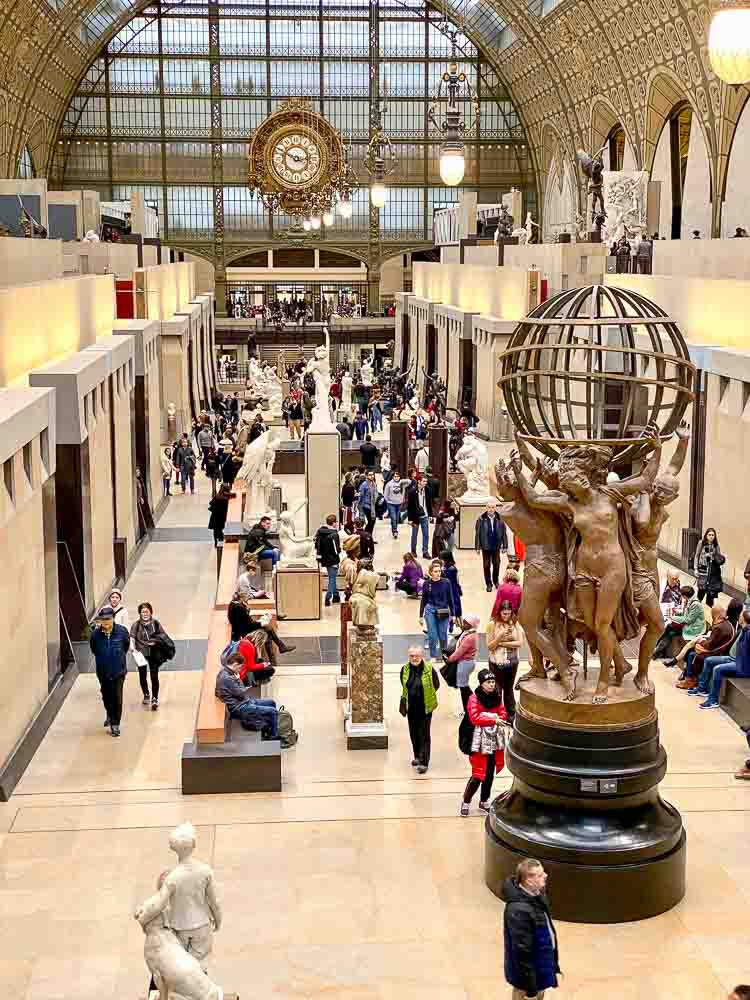
10 Tips to Visit the Orsay Museum
- Plan ahead: Check museum hours and buy tickets online to avoid long queues.
- Visit on weekdays to avoid crowds.
- Start early to make the most of your day.
- Use the museum map to navigate efficiently.
- Focus on your favorite art periods or artists to avoid museum fatigue.
- Bring headphones for the informative audio guide.
- No flash photography inside.
- Enjoy a break at the museum’s café with a view of the Seine.
- Respect the artwork, stay a safe distance, and don’t touch.
- Check for special exhibitions or events during your visit.
Collections Of the Musée d’Orsay
The Musée d’Orsay houses a wide variety of works of art ranging from impressionism to modern art. Here is a description of three of the museum’s most outstanding collections:
Impressionism

Impressionism is one of the most important artistic movements in history, and the Musée d’Orsay is famous for its collection of Impressionist works.
Here you will find works by artists such as Monet, Degas, and Renoir, among others. The collection includes paintings, sculptures, and other types of art and is one of the largest in the world.
- Related reading: Impressionist Museums in Paris
Post-Impressionism
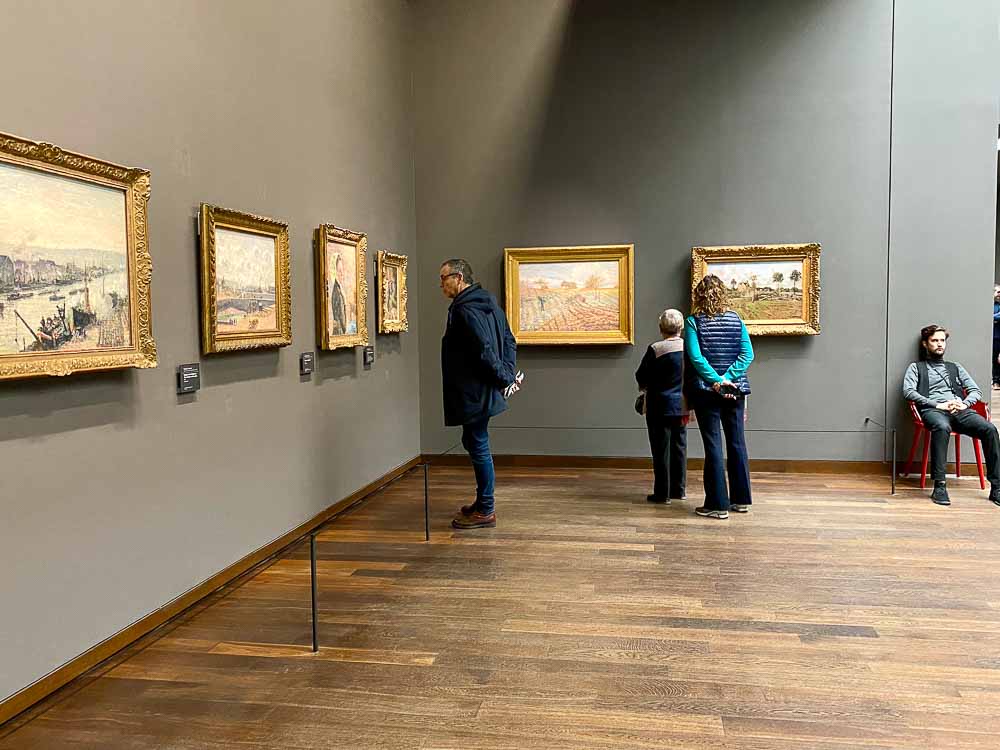
Post-impressionism is an artistic movement that emerged in the late 19th and early 20th centuries. This collection includes works by artists such as Van Gogh, Gauguin and Cézanne.
Post-impressionism is characterized by the use of bright colors and the exploration of emotion and personal expression in art.
Post-Impressionism is an artistic movement that emerged in the 1880s as a reaction against Impressionism.
Although Post-Impressionist artists shared certain characteristics with the Impressionists, such as the use of bright colors and the capture of light and movement, they also sought to go beyond the formal limitations of Impressionism.
Post-impressionist artists focused on using form, color, and texture to express emotions and moods.
Some of the most famous Post-Impressionists include Vincent van Gogh, Paul Cézanne, Paul Gauguin, and Georges Seurat, each with a distinctive artistic style.
Although Post-Impressionism was not an organized movement, its influences can be seen in modern and contemporary art to this day.
Modern Art
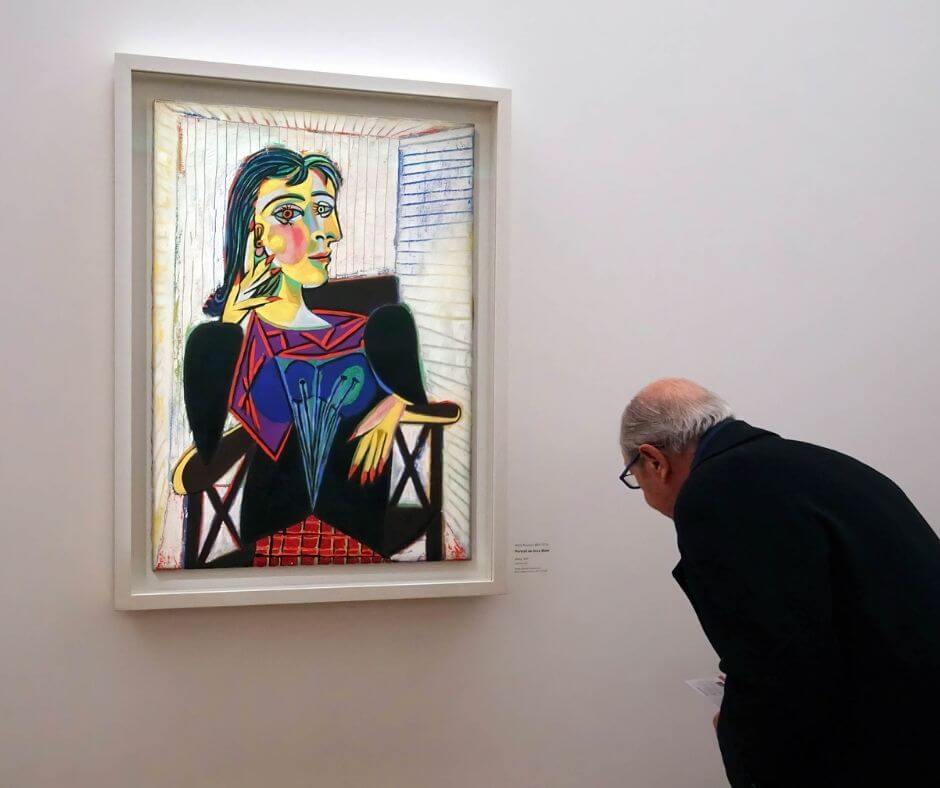
The Musée d’Orsay’s collection of modern art includes works by artists such as Picasso, Matisse, and Modigliani.
These works represent some of the most important trends in modern art, such as Cubism and Fauvism. The collection also includes decorative art and design works, such as furniture and glass objects.
Temporary Exhibitions
The Musée d’Orsay is known for its regularly changing temporary exhibitions. These exhibitions offer a unique opportunity to see works of art from around the world that are not normally on display in the museum.
Here, you can see the temporary exhibitions for the date of your trip.
Note: just in case you are curious, Musée d’Orsay is pronounced “myoo·zay daw·say” in French (with the French r in the w).
The Most Famous Works of the Musée d’Orsay
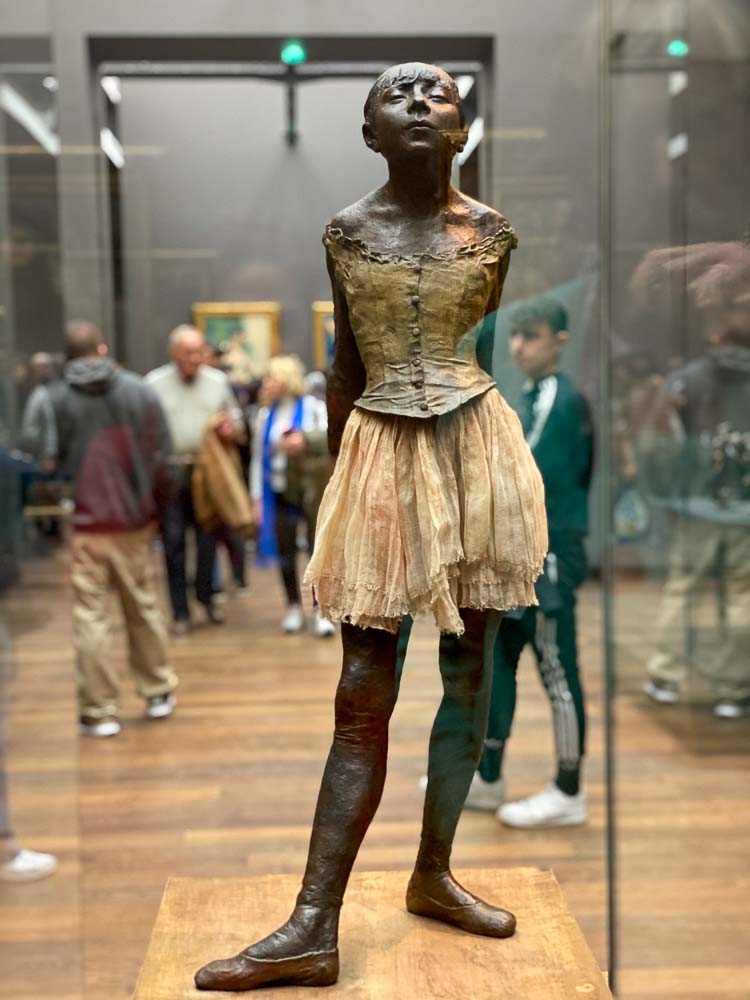
Little Ballerina, 14: This sculpture by Edgar Degas shows a young ballet dancer. The work is known for its realistic technique and the inclusion of real elements, such as the tutu and ballet slippers.
Herakles Kills the Birds of Lake Stymphalia, 1906-1909: Antoine Bourdelle presents a memorable sculpture, not very faithful to the unique features of the model and respectful of tradition, particularly archaic.
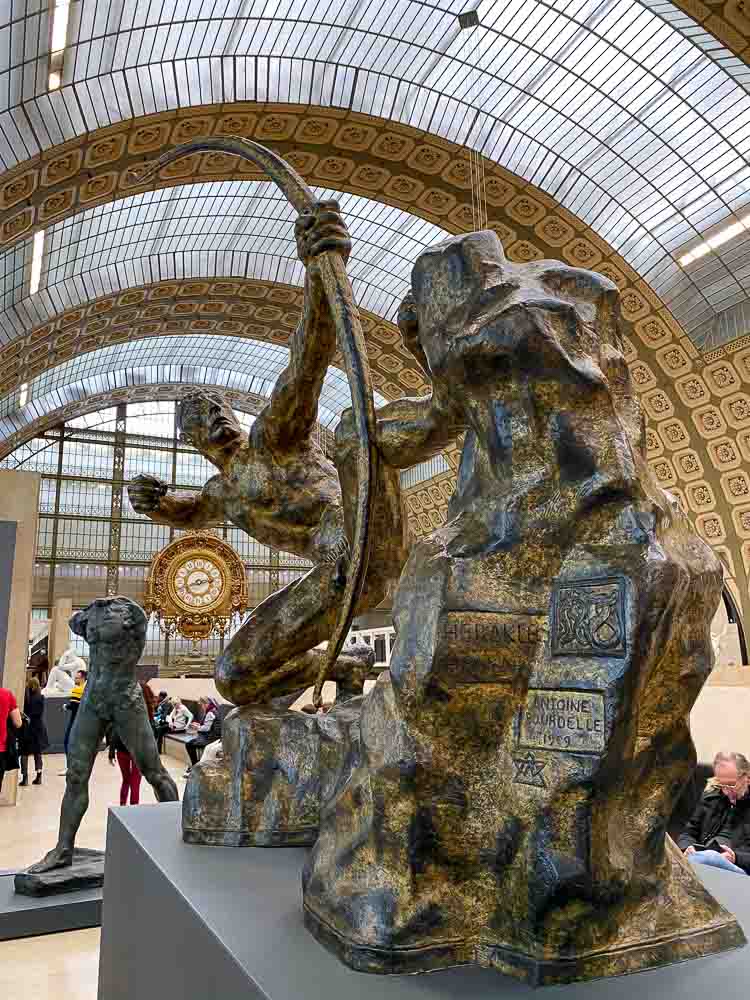
Neither bowstring nor quiver for arrows, the hero Hercules, who kills the birds of Lake Stymphalia, is here a rough synthesis, freed from any realistic requirement.
The success of this sculpture was such that a bronze reproduction now abounds in the most prestigious international institutions.
Note: Herakles and Hercules are the same “person”; the first is called in Greek mythology, and the second is called in Roman mythology.
Gate of Hell: This work by Auguste Rodin is inspired by Dante’s Divine Comedy. This work resembles a monumental open book and definitively frees sculpture from academic norms and the laws of gravity.
If you are interested in Rodin’s art, there is an exclusive museum where you can enjoy many of his works, including the famous thinker.
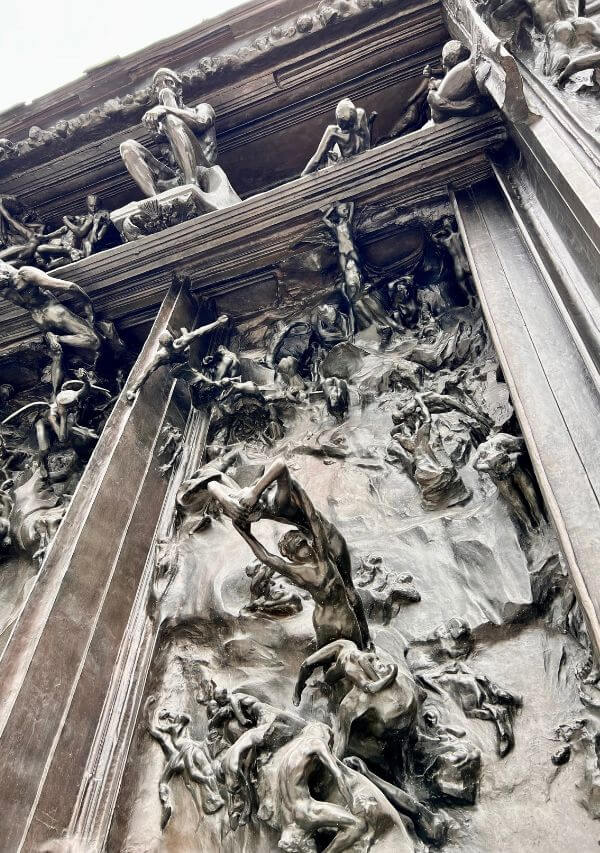
Poppies: This work by Claude Monet shows a field of poppies near his house in Giverny. The painting is known for using color and light to create a sense of effervescence.
Monet said, “I want to paint the air in which the bridge, the house, the boat are. The beauty of the air where they are, and it is but impossible.” It seems that he achieves it with this work of poppies.
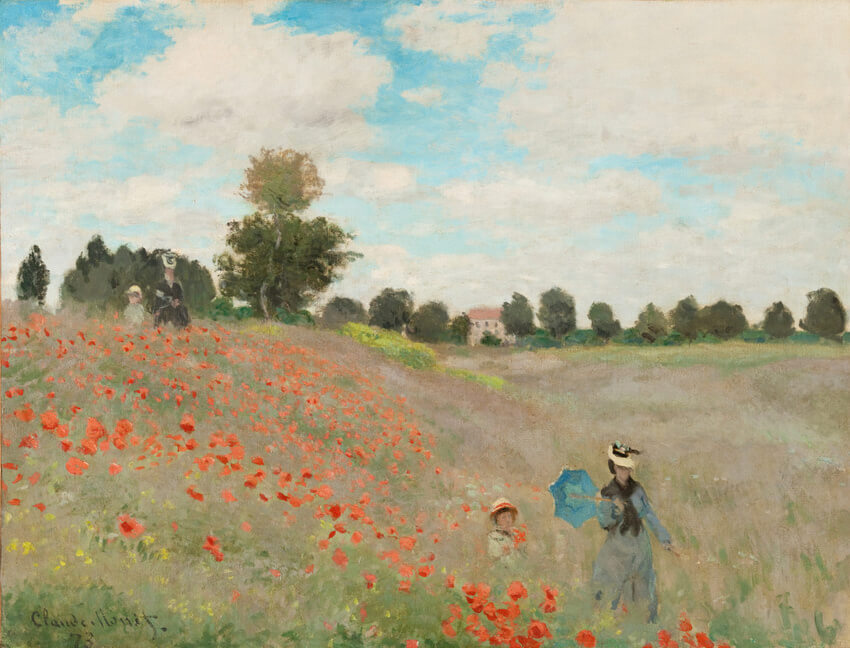
The Origin of the World: it was a secret and clandestine work during Courbet’s lifetime. It was first owned by a Turkish collector and then passed through many hands, including the psychiatrist and psychoanalyst Jacques Lacan.
This work by the French painter Gustave Courbet shows a detailed close-up of the female genitalia and abdomen. It was considered very controversial when it was first exhibited in 1866.
Dancing at the Moulin de la Galette, 1876: This painting by Auguste Renoir depicts a lively scene of Parisian nightlife in the 19th century. The painting shows an outdoor terrace in the Montmartre neighborhood, where people gather to dance and socialize.
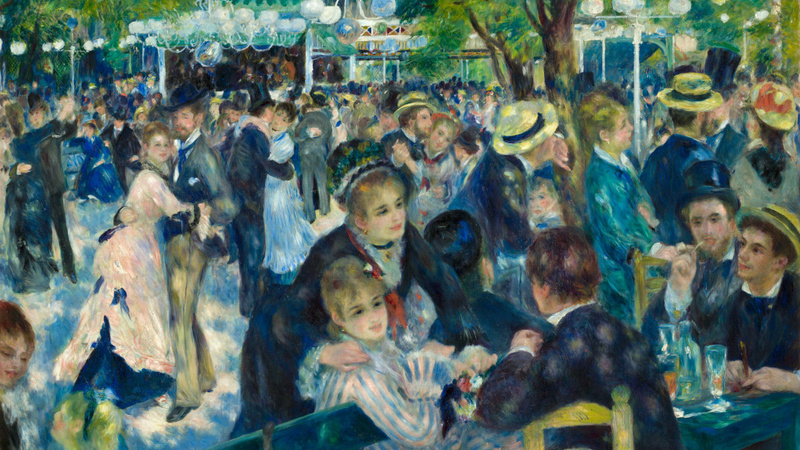
The painting is full of details, from the foliage of the acacias to fleeting expressions.
It seems that Renoir had several friends pose to paint in situ, according to the testimony of the critic Georges Rivière.
Olympia, 1863: This painting by Edouard Manet depicts a nude woman, a model by profession, reclining on a bed and looking directly at the viewer. The work caused controversy at the time for its realistic depiction of the nude.
Starry Night, 1888: This work by Vincent Van Gogh shows a nightscape with the Rhone River in Arles, France. The painting is known for using color and brushstrokes to create an emotional atmosphere.
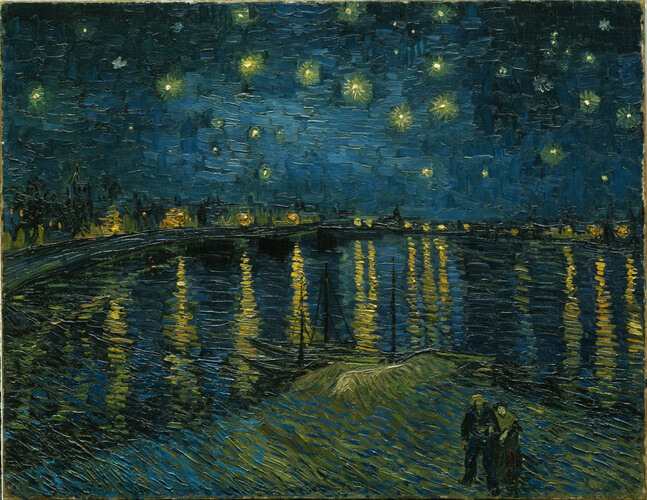
Creating this kind of atmosphere was one of Van Gogh’s preoccupations and he achieves it with this magnificent work, which he was very fond of.
Van Gogh self-portrait, 1889: Vincent van Gogh’s self-portrait was painted in 1889, shortly before his internment in the psychiatric hospital of Saint-Paul-de-Mausole. The work shows Van Gogh’s distinctive paint application technique in thick, textured layers.
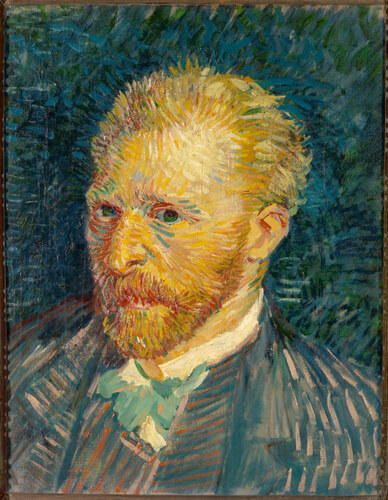
Blue Nymphs (1916-1919): This set of panels by Claude Monet shows his water garden in Giverny, France. The painting is known for its use of color and light to create a sense of calm and serenity.
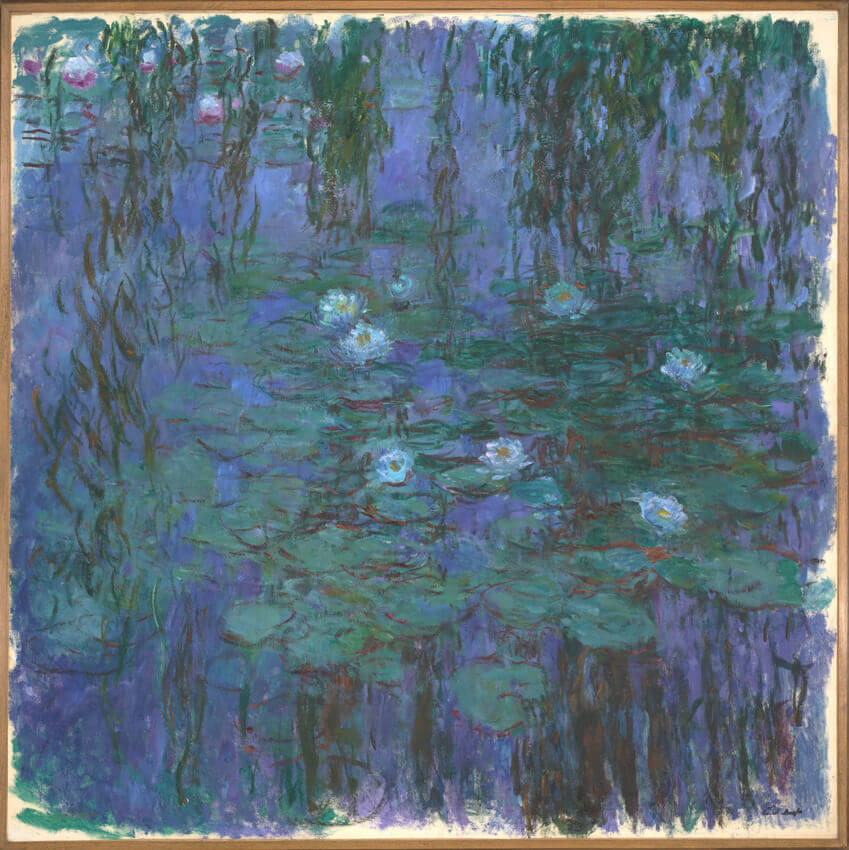
The Gleaners, 1857: This painting by Jean-François Millet depicts three women picking ears of wheat after the harvest. The work is known for its realistic depiction of rural life in France.
In the foreground, this painting combines three ragged women picking up forgotten ears of corn after a harvest and a background showing the abundance of a farm whose landowner rides a horse.
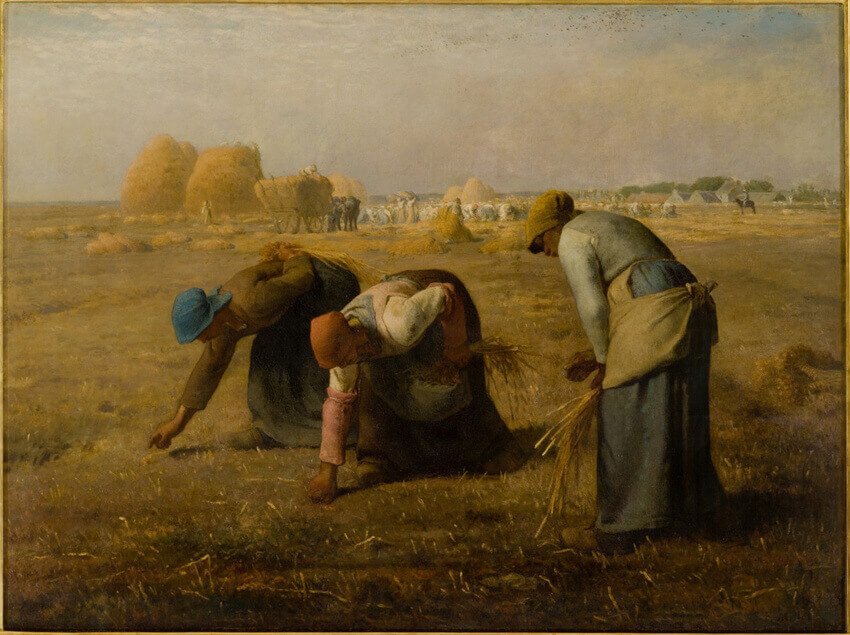
Lunch on the grass: The painter Édouard Manet came up with the idea for his “bath,” the original title of the painting, when he saw some women getting out of the water in Argenteuil: “It seems that I have to do a nude. Well, I’m going to do one for them!”
The composition is inspired by classical works such as Titian’s country concerto and The Judgment of Paris. This outdoor picnic has something theatrical and artificial about it; pay close attention to all the details.
The painting was the laugh of the Salon des Refusés of 1863: its supposed indecency and its style aroused terrible aggression.
The White Horse, 1898: Paul Gauguin created this large-scale work which is part of a series of paintings made by Gauguin in the last phase of his career on the theme of man and horse, an animal imported to Polynesia by the Spaniards in the 16th century.
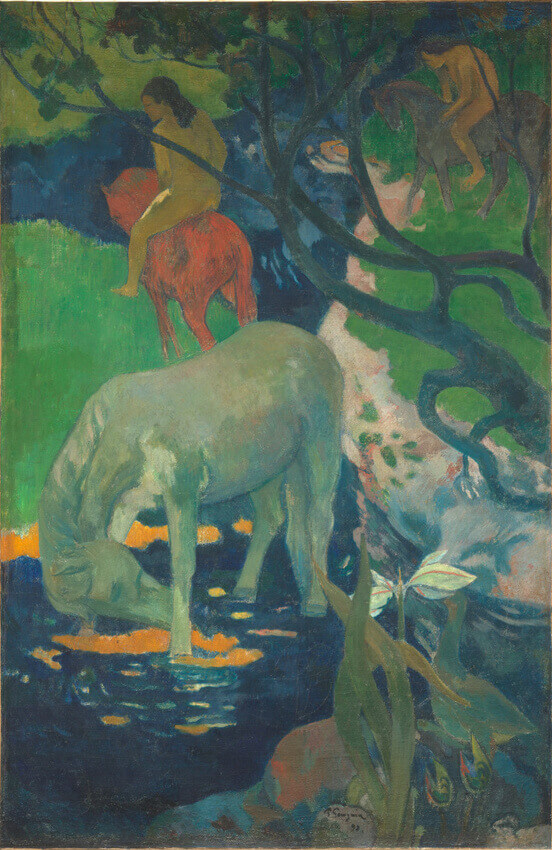
Family portraits: this painting by Frédéric Bazille shows a family reunion, its characters of intense expression, are immersed in the Mediterranean light, subtly tempered by the shade of a large tree.
Auguste Renoir paints these works as two facets of the same practice: on the one hand, the opportunity for a moment of light, country relaxation in the setting of Bougival, on the other, a much more mundane, elegant and leisurely ballroom dance.
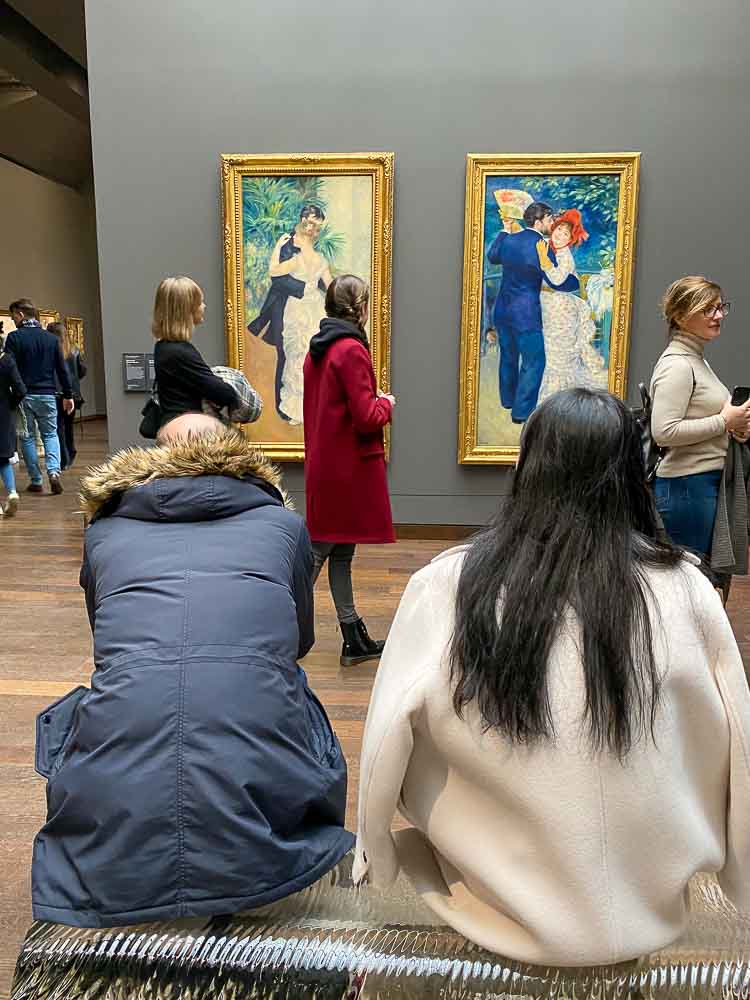
Van Gogh’s Bedroom in Arles, 1889: this painting shows the artist’s bedroom in the French town of Arles. Van Gogh painted three versions of this work, but the one in the Musee d’Orsay is the most famous version. With this work, Van Gogh wanted to express what he calls “absolute rest.”
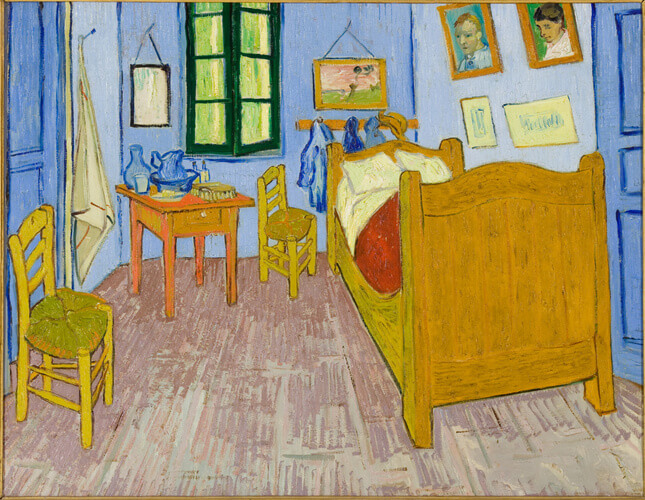
I could continue with this list, but I think I’ll stop here. Tell me in the comments what are your favorite works from the Musée d’Orsay.
RELATED READINGS:
- What to see in Paris in 7 days, itinerary for your first trip
- What are The Most Famous Bridges in France?
Useful Tips
If you plan to visit the Musée d’Orsay in Paris, there are some useful tips to remember to make your experience unique.
Paris Museum Pass
If you will visit several museums in Paris, consider purchasing the Paris Museum Pass. This pass gives you access to more than 50 museums and monuments in and around Paris, including the Musée d’Orsay.
It also allows you to avoid queues at many of the most popular tourist sites.
How to Avoid Queues
The Musée d’Orsay is one of the most popular museums in Paris, so queues can be long, especially during the high season.
To avoid queues, consider buying your tickets in advance online or using the Paris Museum Pass.
You can also arrive early in the morning or later in the afternoon when lines are usually shorter.
What to Pack
To make the most of your visit to the Musée d’Orsay, it is advisable to wear comfortable shoes, as the museum is large and there is a lot to explore.
It is also advisable to bring a bottle of water and a snack if you do not want to spend money at the museum cafeteria.
Also, be sure to bring a jacket or sweater, as the temperature inside the museum can be cool.
Guided Tours of the Musée d’Orsay
Guided tour of the Musée d’Orsay: This small group guided tour in a small group includes priority access to the museum and the opportunity to discover some of the most famous works, such as the painting “The Starry Night” by Van Gogh or the Statue of “The Little Dancer of Fourteen” by Degas.
Private tour to the Musée d’Orsay: If you prefer more of an experience, you can opt for a private tour that allows you to explore the museum at your own pace with an expert guide.
You can choose the works that interest you most and get a deeper insight into their history and meaning.
Night visit to the Musée d’Orsay: Would you like to discover the museum in a more intimate and exclusive atmosphere? This nocturnal visit allows you to enjoy the museum’s collections after hours, when the crowds have disappeared.
Impressionist art tour at the Musée d’Orsay: If you are interested in the Impressionist movement, this tour will take you through the rooms of the Musée d’Orsay to discover some of the most emblematic works of this artistic style.
Family visit to the Musée d’Orsay: If you are traveling with children, you can opt for a family visit that includes activities and games designed especially for the little ones. They will be able to discover works of art while having fun and learning.
How to Get There
The Musée d’Orsay is one of the most popular museums in Paris, and is easily accessible by public transportation. Here’s how to get there:
By Subway

The closest metro station to the Musée d’Orsay is the Solferino station on line 12 of the Paris metro. From there, walk about five minutes towards the Seine River and you will find the museum.
By Bus

The museum is well served by several bus lines. Lines 24, 63, 68, 69, 69, 73, 83, 84 and 94 stop near the museum. Check schedules and routes to find the best option for you.
On RER
RER line C also stops at the Musée d’Orsay. If you are coming from Charles de Gaulle airport or from the center of Paris, you can take the RER C to the Musée d’Orsay station.
From there, walk about five minutes towards the Seine River and you will find the museum.
Remember that public transportation in Paris is very efficient, but it can also be very crowded. If you are in a hurry or want to avoid crowds, consider taking a cab or using a transportation app like Uber or Lyft.
On Foot
If you are on foot, put the address in your smartphone’s GPS: Esplanade Valéry Giscard d’Estaing 75007, Paris.
Practical Museum Information
I recommend buying tickets in advance to avoid queues at the museum’s ticket office.
You can purchase tickets online through the museum’s official website or through other ticketing websites. You can also purchase tickets in person at the museum’s box office.
Ticket Prices
Ticket prices may vary depending on the season and exhibitions.
The general ticket for an adult is around 14€, while the reduced ticket for people under 26 years old costs around 11€.
Also, you can choose a Musée d’Orsay Ticket plus Seine Cruise.
Schedule
The museum is open Tuesday through Sunday, 9:30 a.m. to 6:00 p.m., and on Thursdays until 9:45 p.m.
The museum is closed on Mondays, as well as on May 1 and December 25. Please note that the last admission is 30 minutes before the museum closes.
It is advisable to visit the museum’s official website for up-to-date information on opening hours and exceptional closures before planning your visit.
What is the Musée d’Orsay Known for?
In addition to its impressive art collection, the Musée d’Orsay is known for its magnificent architecture and its history as a former train station.
The building was constructed in 1900 for the Universal Exposition and served as a train station until 1939, when it was closed due to lack of capacity to accommodate longer trains.
In the 1970s, the idea of converting the station into a museum was proposed and, after extensive renovation, the Musée d’Orsay opened its doors in 1986.
Today, the building is considered a masterpiece of the Beaux-Arts style. Pay attention to some of its architectural details, such as the impressive glass vault in its central lobby.
Which Museum is Better, The Louvre or The Orsay?
If you are in Paris, it is very likely that you will want to visit some of the most famous museums in the world, such as the Louvre or the Musée d’Orsay.
Both museums are impressive and offer a wealth of artwork and exhibits to enjoy. However, which one is better to visit?
The Louvre is one of the largest museums in the world and boasts an impressive collection of more than 380,000 art objects.
If you are a lover of art history, you should definitely visit the Louvre. You can spend hours admiring the masterpieces, from the famous Mona Lisa to the impressive Venus de Milo.
On the other hand, the Musée d’Orsay is famous for its impressive collection of Impressionist and Post-Impressionist art.
Here you can find works by artists such as Van Gogh, Monet, Renoir and Degas. In addition, the building itself is impressive, as it is a former train station building converted into a museum.
So, which one is better to visit? It depends on your personal interests. If you love art history and want to see a lot of works of art, the Louvre is the best choice.
If you prefer impressionist and post-impressionist art and want to visit an architecturally beautiful building, the Musée d’Orsay is the best choice.
Plan Your Trip to Paris
- Best time to travel to Paris
- The museums of the 16th Arrondissement of Paris
- Free guided tours in Paris with a tour guide
- Money-saving tips for your trip to Paris
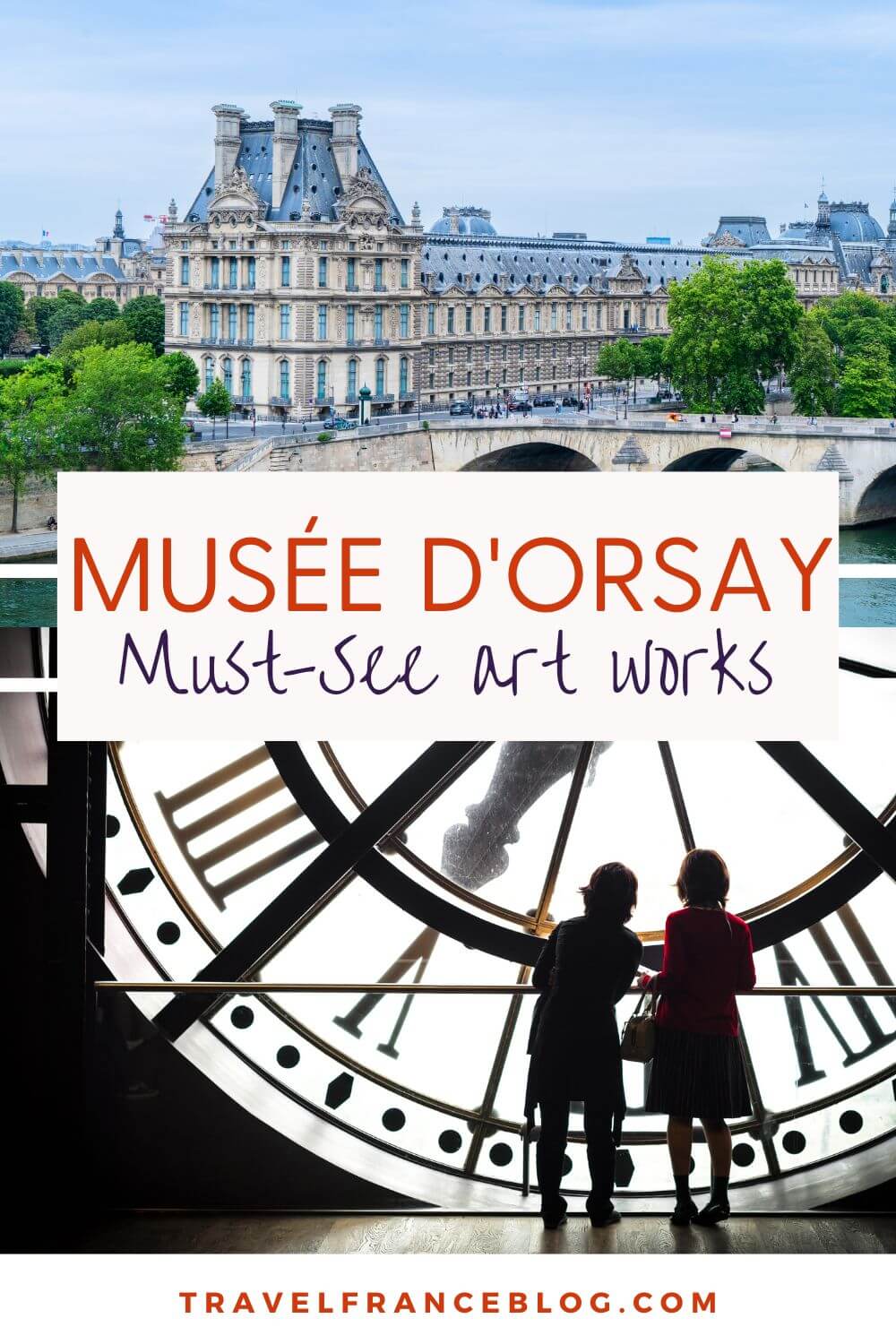
This post may include affiliate links. This means that we will receive a small fee if you make a purchase through our links. It has no additional cost to you. It’s a win-win!
